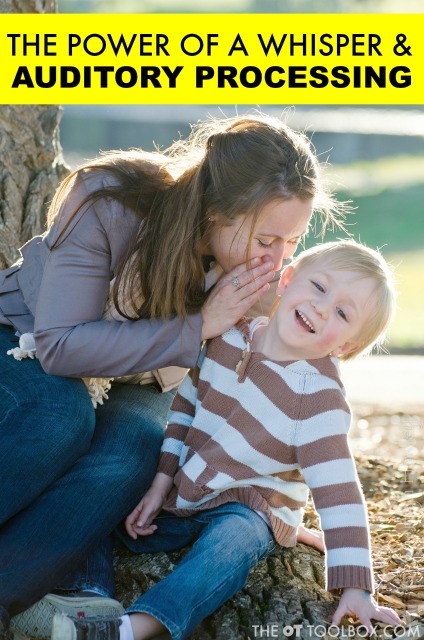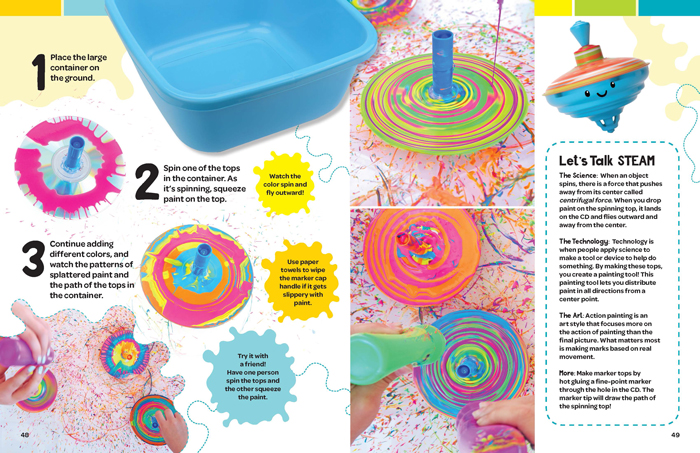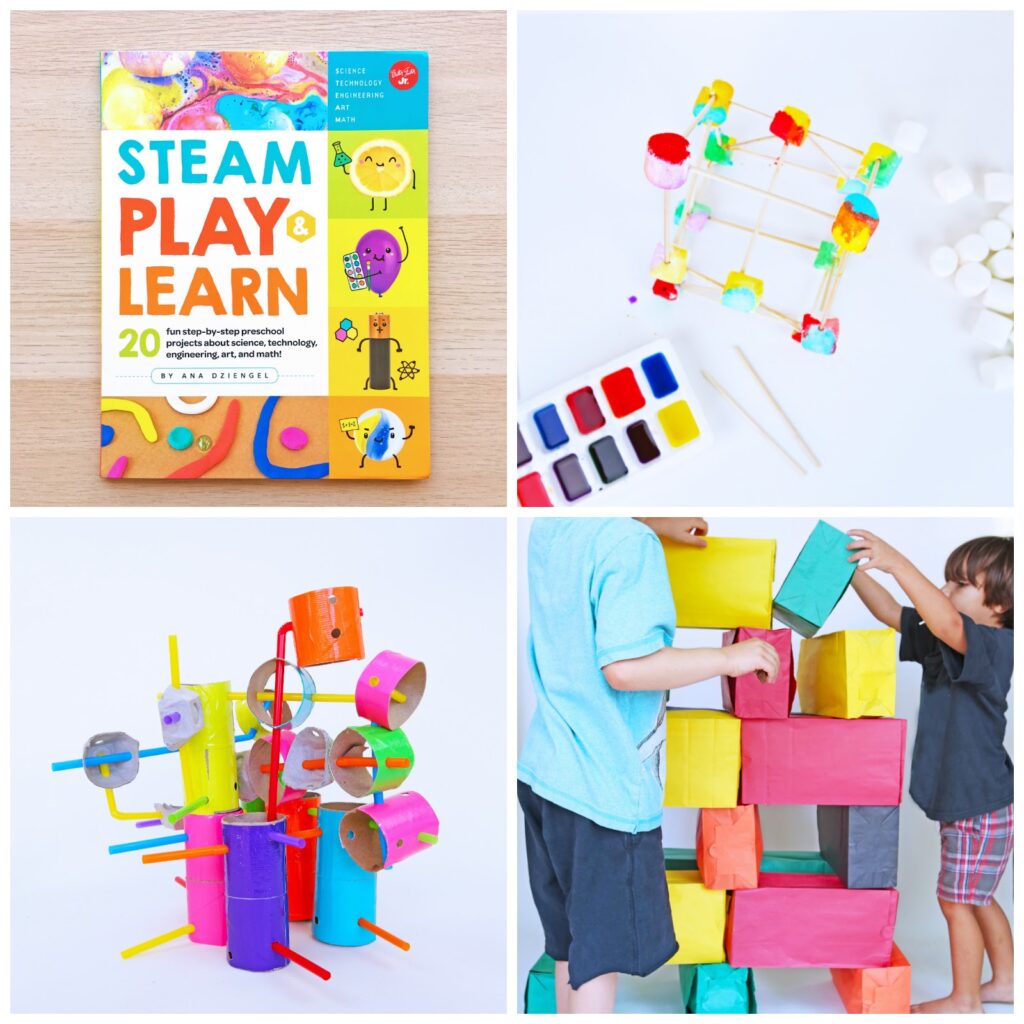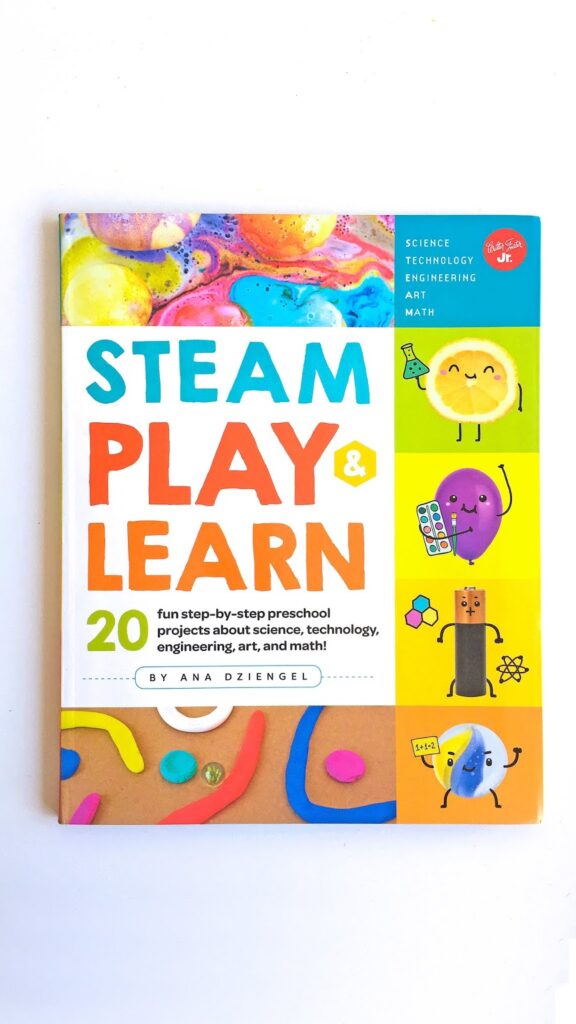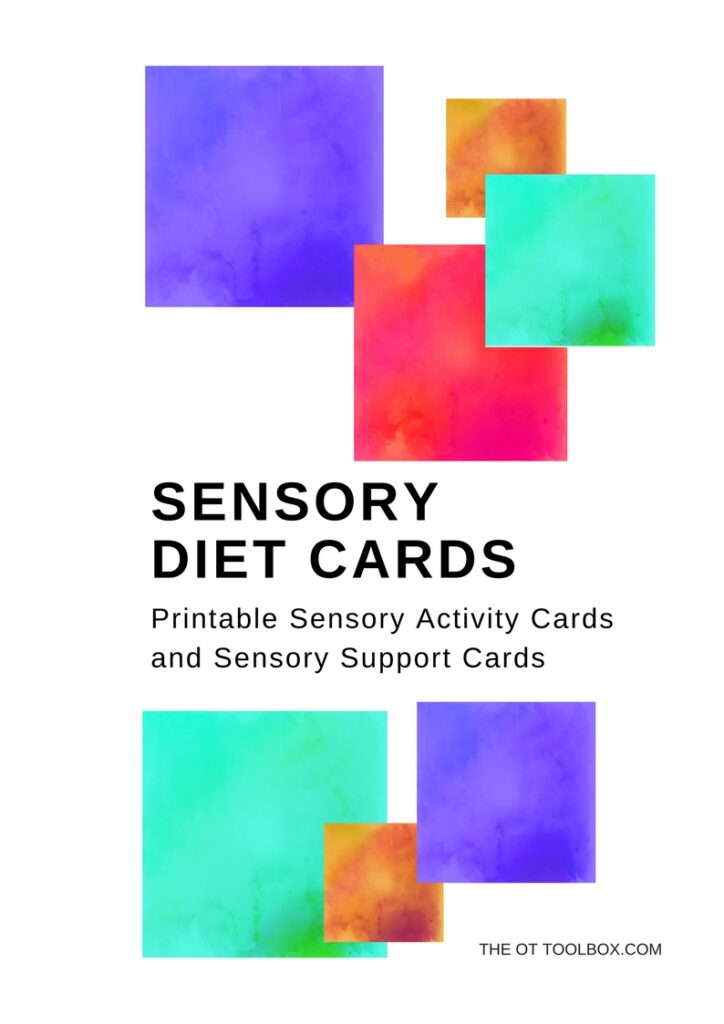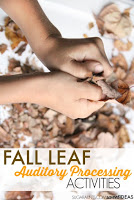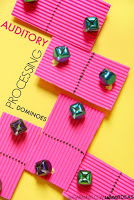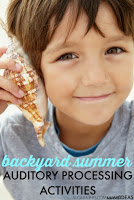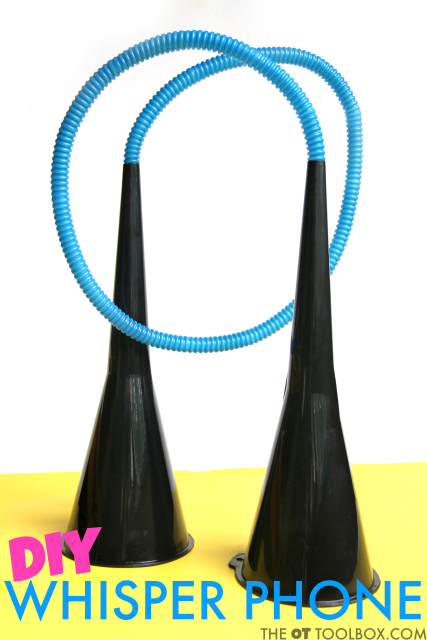
DIY Whisper Phone
What is a Whisper Phone?
- Poor listening skills
- Auditory attention challenges (distractions by sounds in a classroom or home)
- Difficulty with language comprehension
- Auditory sensory sensitivities
- Other listening concerns
- Auditory discrimination
- Auditory sequencing
- Auditory memory
- Auditory figure-ground
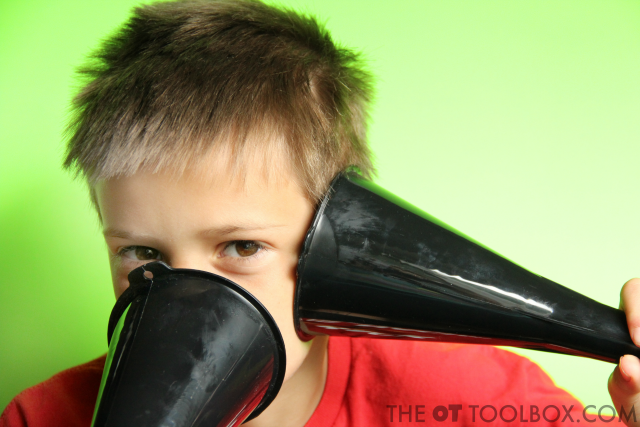
How to use a Whisper Phone
Sometimes a whisper phone is used in the classroom setting during reading tasks. To use this auditory feedback device, it is quite simple:
- Hold one end of the whisper phone up to your ear.
- Hold the other end of the device up to your mouth.
- Whisper into the phone and listen for the sound waves to move through the device to directly to the ear.
Some whisper phones require two hands like the one we created. Others can be held in one hand. These devices might be a U-shaped piece of tubing, or a few pieces of PVC pipe that are glued together. These types of whipser devices are nice for feedback during reading.
To use the whisper device, ask the student to experiment with a variety of sound levels. They can whisper, talk, hum to see how sounds are transferred directly to their ears.
As the student to read aloud into the device. Then ask them to read while there is background noise present. Let them experiment and see how loud they need to speak into the device to ensure auditory comprehension.
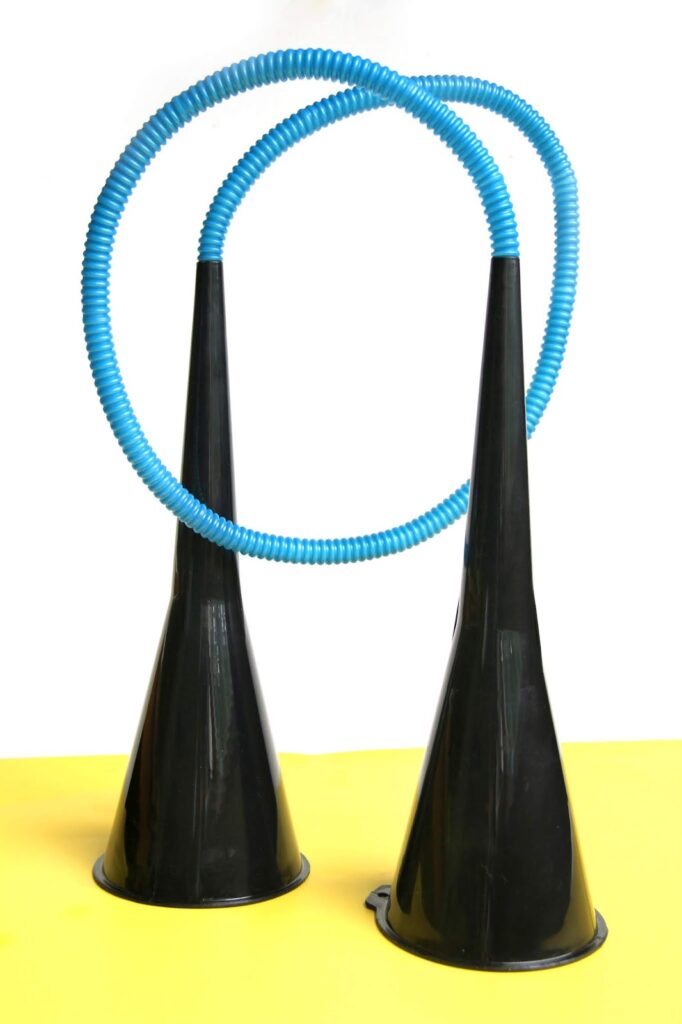
A whisper phone can be used in many ways:
- Sound out words to identify parts of words.
- Auditory feedback when reading.
- Provide a calming sensory diet activity.
- Improve self-confidence with reading skills.
- Discriminate between sounds and background noise.
- Identify tone and volume of speech.
- So much more!
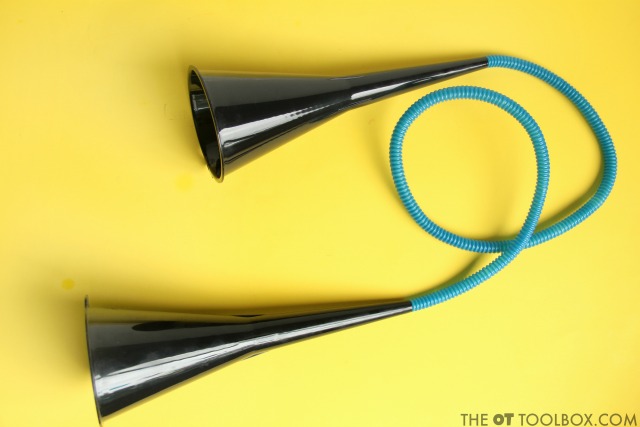
How to make a DIY Whisper Phone
- Two small funnels
- One tube
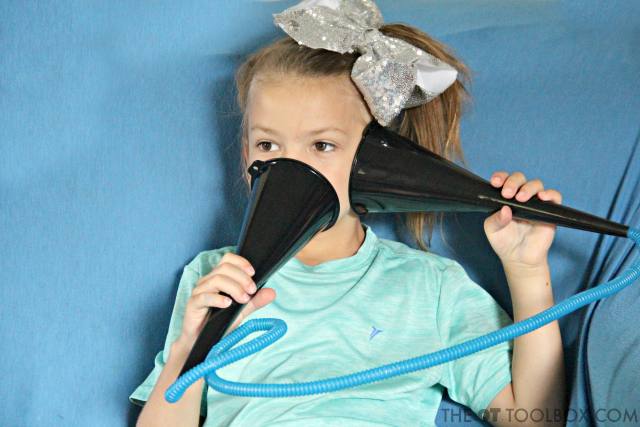
Auditory Feedback Phone (STEM Activity)
I love that this auditory feedback phone is a STEM activity that kids can create themselves as a STEM and fine motor activity.
By making this auditory feedback device, kids are learning about science with the concept of the auditory processing system, the mathematics of sound waves, and engineering to create the technical ability to transport whisper sounds through the device the creates feedback in the way of sounds.
Looking for more ways to address sensory needs?
You will love our Printable Sensory Diet Cards that cover so many areas! There are activities and ideas to address auditory processing needs, plus every other sensory system. Grab our Sensory Diet Cards for a complete packet of sensory activities. You’ll find 24 pages of 345 sensory diet activities including:
-
Calming and alerting movement activities
-
Heavy work fine motor activities for pre-writing needs or fidgeting needs
-
Sensory activities
-
Sensory support cards
- Fall Leaf Auditory Processing Activity
- Musical Bell Auditory Processing Activity
- Auditory Processing Activity Backyard Ideas
- Sensory Shaker Bottles Auditory Processing Activity
More ways to use a Whisper phone in auditory processing skills
Many of the activities in the Auditory Processing Kit can be used with a DIY whisper phone or a commercial version.
The Auditory Processing Kit is a tool to support learners by building skills in listening comprehension, auditory processing needs, and much more. The tools offer support to learners with hyper-responsive or hypo-responsive auditory systems. Therapists love the hands-on activities to support learning and active listening through play and handwriting tasks.
- Listening Comprehension
- Fine Motor Listening Skills
- How to Improve Listening Skills Poster
- Clap It Out Syllables Orthographic Activities
- Beginning Sounds Letter Activity
- Rhyming Words Activity
- Activity Listening Activity
- Hearing Skills Activity
- Auditory Memory Strategies
- What Does Active Listening Look Like?
- Whole Body Listening Activity
- Whole Body Listening Poster
- Listening and Motor Skills Game
- 2 Step Direction Cards
- How to Support Hyper-Responsiveness of the Auditory Sense (handout and info sheet)
- How to Support Hypo-responsiveness of the Auditory Sense (handout and info sheet)
- Auditory Processing Tools Cards
- Auditory Processing Speed -2 Digit Numbers
- Auditory Processing Speed -3 Digit Numbers
- Auditory Processing Speed -4 Digit Numbers
Use the handouts and posters to teach about the auditory system and auditory sensitivities, with strategies to support individualized needs. Get your copy of the Auditory Processing Kit today.

Colleen Beck, OTR/L has been an occupational therapist since 2000, working in school-based, hand therapy, outpatient peds, EI, and SNF. Colleen created The OT Toolbox to inspire therapists, teachers, and parents with easy and fun tools to help children thrive. Read her story about going from an OT making $3/hour (after paying for kids’ childcare) to a full-time OT resource creator for millions of readers. Want to collaborate? Send an email to contact@theottoolbox.com.


